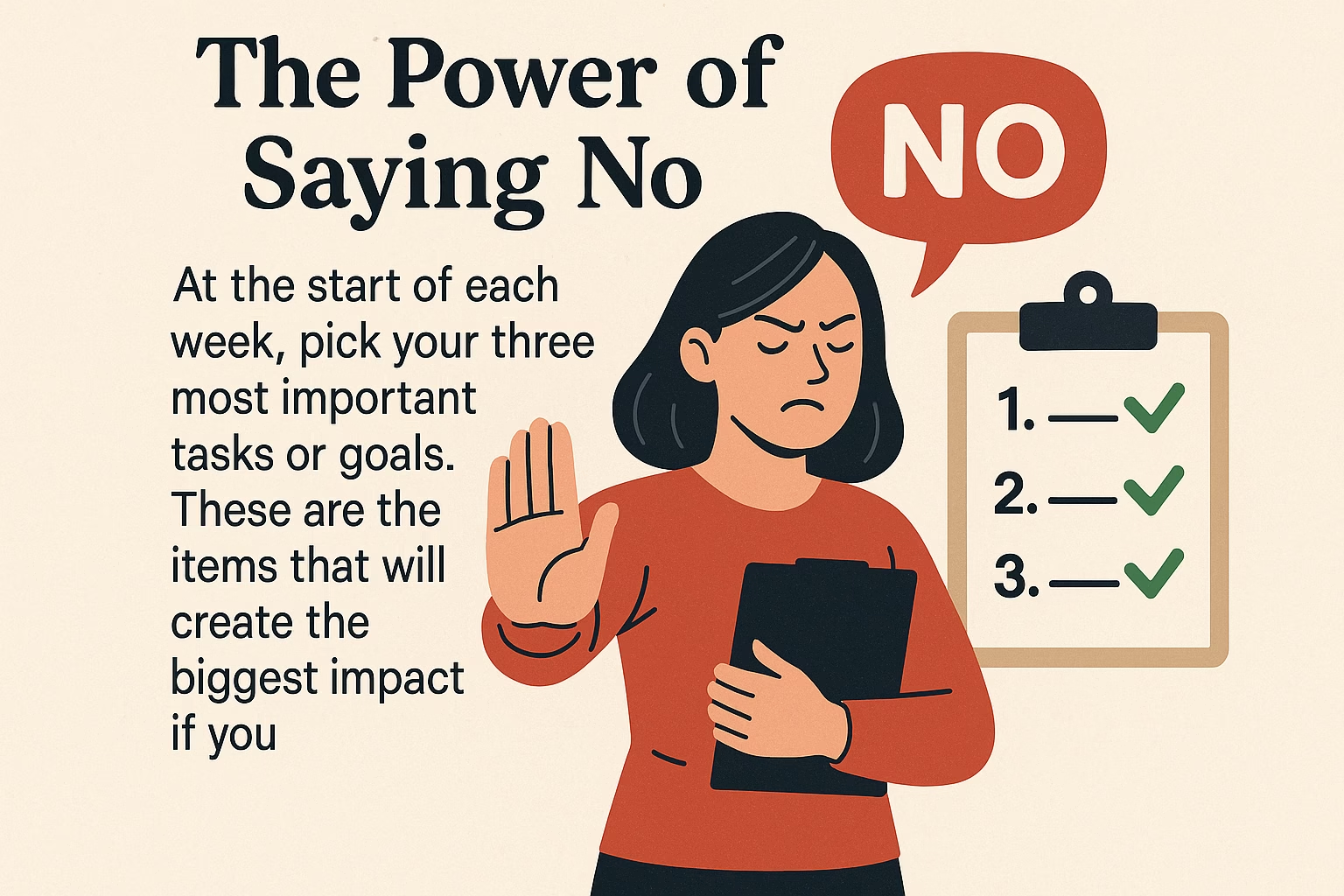
Feeling constantly busy but never truly caught up? My journey used to be a relentless cycle of ticking off tasks. I felt exhausted and disconnected from what truly mattered. I’ve learned that true Productive living isn’t about doing more, but about living smarter. Join me as I share the practical insights and shifts that helped me reclaim my time, energy, and joy. You can thrive without sacrificing your life.
Beyond Busy: How to Be Productive and Keep Your Life
In our always-on world, “productivity” has become an idol. We chase it relentlessly. And often sacrifice our well-being, relationships, and peace of mind. We are told to hustle harder. And optimize every minute. We stack our to-do lists higher. We believe that sheer volume of output equals success. But what if this constant chase makes us less effective, more stressed, and unfulfilled?
This article will not add more to your plate. It will not make you feel guilty for sleeping in. It is about a major change in perspective. True productivity is not measured by hours worked or tasks completed. It is measured by the meaningful output you create without sacrificing the life you are working for. And it means working smarter. It means living richer. It means finding a steady rhythm that helps you rather than drains you.
Let’s drop the idea that productivity requires burnout. We will build a new framework. This new system lets accomplishment and well-being exist together.

The Myth of More: Why Being Busy Fails Us
For too long, the story of productivity has been about lack and endless effort. We confuse being busy with being important. We confuse rest with laziness. This creates a terrible cycle:
- The Busy Trap: Society, work, and our own inner voices tell us we are falling behind if we are not constantly working. This causes huge pressure to fill every second.
- The Burnout Cycle: Pushing past our natural limits causes exhaustion. And leads to poor focus. It causes bad decisions. It eventually leads to physical and mental burnout. The goal we are chasing becomes impossible to reach.
- Sacrificing Life for Work: Hobbies disappear. Family time is cut short. Sleep is treated like a luxury. Our mental health is ignored. We might be “productive” at work. However, we are often “unproductive” in life.
This is not a long-term plan. We need to redefine what it means to be truly productive.
Redefining Productivity: Focus on Quality, Not Volume
True productivity means intentional output. It focuses on what truly matters. And aligns your actions with your values and goals. It is not about working longer hours. Or about making the hours you do work count. It is about:
- Impact, not Activity: Are you moving the most important projects forward? Or are you just spinning your wheels on tasks that don’t matter?
- Energy Management: You must recognize that your mental and physical energy changes. Plan your day around these natural energy dips and peaks.
- Sustainability: Build habits and systems you can keep up over time. This protects you from burnout.
- Life Integration: Your work-life plan must allow for joy, rest, connection, and personal growth.
With this new understanding, let’s look at simple steps to become truly productive without giving up your life.
Strategy 1: Know Your Priorities – The Power of Saying No

The biggest mistake is trying to do everything. Being productive without sacrificing your life starts with knowing what truly needs your energy.
How to Do It:
- Identify Your Top 3: At the start of each week, pick your three most important tasks or goals. These are the items that will create the biggest impact if you complete them. Everything else is less important.
- The Eisenhower Matrix: Sort tasks by Urgency and Importance.
- Urgent & Important: Do these first (e.g., project deadline, major crisis).
- Not Urgent & Important: Schedule them (e.g., strategic planning, exercise, skill development).
- Urgent & Not Important: Delegate them (e.g., some emails, minor team requests).
- Not Urgent & Not Important: Eliminate them (e.g., most social media scrolling, unnecessary meetings).
- Practice Saying “No”: Politely decline requests that don’t fit your goals or your capacity. Remember this: every “yes” to something is a “no” to something else. That “no” is often to your own well-being or most important work.
Strategy 2: Manage Your Energy, Not Just Your Clock
Time is limited, but your energy changes throughout the day. Knowing your personal energy rhythms is much better than just watching the clock.
How to Do It:
- Find Your Peak Energy Times: Are you sharpest in the morning? Or do you work best in the afternoon? Track your energy levels for one week.
- Schedule High-Impact Work During Peak Times: Use your high-energy blocks for your “Top 3” tasks. This is when you should do your most challenging, creative, or focused work.
- Save Low-Energy Tasks for Low-Energy Times: Administrative work, email, data entry, or routine meetings can be done when your focus is naturally lower.
- Take Smart Breaks: Our brains cannot sustain intense focus for hours. Short, planned breaks (5-15 minutes every 60-90 minutes) actually improve productivity.
- Example: Mark used to push through his afternoon slump. Now, he takes a 15-minute walk outside instead. He returns to his desk feeling new. He often solves problems that seemed too difficult just minutes before.
Strategy 3: Set Boundaries – Protect Your Life

One of the biggest sacrifices we make is mixing work and life. Strong boundaries are key for sustainable productivity and a happy personal life.
How to Do It:
- Define Your “Workday End”: Decide exactly when your workday stops. Stick to that time every day. Tell your colleagues about this boundary if you need to.
- Example: Jessica closes her laptop at 5:00 PM every day. There are no exceptions. She uses the time after 5:00 PM for family and hobbies. She worried at first about missing things. However, knowing her “off” time was sacred made her more focused at work.
- Set “Do Not Disturb” Zones/Hours: Mute alerts. Close extra tabs. Put your phone away during focused work blocks or personal time. This prevents switching your mental focus. Switching focus is a huge productivity killer.
Designate “Non-Negotiable” Life Activities: Block out time in your calendar for personal health. This includes exercise, meal prep, quality time with loved ones, and hobbies. Treat these calendar slots like important work meetings.
Strategy 4: Make Your Environment Work for You
Your physical and digital spaces heavily affect your ability to focus and be productive. A messy, distracting environment quickly leads to feeling overwhelmed.
How to Do It:
- Tidy Your Workspace: A clean desk reduces visual distractions. Keep only the items you need for the current task.
- Example: Before starting work, Alex spends five minutes cleaning her desk. This simple act creates a clear physical space. This clear space leads to a clearer mental space for her work.
- Reduce Digital Distractions: Close unneeded browser tabs. Turn off desktop alerts. Put your phone on silent and leave it out of sight. Think about using website blockers during focused work periods.
- Choose Your Soundscape: Some people need silence. Others focus better with instrumental music or nature sounds. Find what helps you concentrate best.
- Optimize Comfort: Make sure your workspace has good light. Natural light is best. Use an ergonomic chair. Physical discomfort is a major distraction.
Strategy 5: Delegate and Automate – Use Your Time Wisely
You do not have to do every task yourself. Learning to delegate and automate tasks frees up your valuable time and energy. This allows you to focus on higher-impact work and personal interests.
How to Do It:
- Delegate When Possible:
- In Your Job: Find tasks that another person (a team member, a virtual assistant) could handle well. Trusting others improves with practice.
- In Your Personal Life: Can you pay for help with chores (cleaning, yard work)? Can family members take on more duties?
- Example: Maria, a small business owner, spent hours on basic social media scheduling. She hired a part-time virtual assistant. This freed her time for client relations and strategic business development. These were her highest-impact tasks.
- Automate Routine Tasks:
- Digital Tools: Use email filters, calendar reminders, and finance apps to automate repetitive actions.
- Personal Routines: Set up automatic bill payments. Get recurring grocery deliveries. Pre-plan your meals for the week.
- Example: Chloe prepares her coffee maker the night before to save time. She also lays out her workout clothes. These small automations save minutes and reduce decision fatigue.
Strategy 6: Embrace Rest – The Key to Being Productive

This strategy might seem illogical. Our culture values constant work. It sees rest as a luxury or a sign of failure. But quality rest is not the opposite of productivity. It is the essential base for sustained productivity.
How to Do It:
- Prioritize Sleep: Aim for 7 to 9 hours of good sleep each night. Lack of sleep greatly reduces clear thinking, decision-making, creativity, and emotional control.
- Example: Liam used to boast about sleeping only 5 hours. But he was making careless mistakes at work and was easily angered at home. He committed to 8 hours of sleep. He quickly saw huge gains in focus, problem-solving, and his general mood.
- Schedule True Downtime: This means more than just “not working.” It means doing activities that truly refresh you.
- Active Rest: Exercise, hobbies, time in nature, and connecting with loved ones.
- Passive Rest: Reading for fun, listening to music, meditation, or just relaxing quietly.
- Take Micro-Breaks: Even very short breaks (looking away from your screen for a minute, stretching) stop mental fatigue.
- Commit to Disconnection: Regularly step away from screens and notifications. Fully enjoy non-work activities. This is vital for reducing stress and sparking creative thinking.
Strategy 7: Be Present – Focus on the Moment

In our rush to be productive, we often live in the future. We plan the next task. We worry about the next deadline. This mental time-travel steals the present moment. It lessens our ability to fully engage with either work or life.
How to Do It:
- Single-Task Intentionally: When you work on a task, only work on that task. When you are with family, be fully with your family. Stop the urge to constantly juggle tasks or think about what’s next.
- Example: David is eating dinner with his children. He consciously puts his phone away and listens only to their talk. And finds these moments are much better. He returns to work the next day feeling less stressed and more connected.
- Mindful Transitions: Take a moment to clearly switch gears between different activities. Take a deep breath before starting a new task. Before you leave work for home, take a minute to mentally close your workday.
- Engage Your Senses: Notice the details whether you are working or resting. What do you see, hear, smell, or feel? This simple act brings you to the present. It makes your experience richer.
- Example: Sarah is walking her dog. She focuses on the feeling of the sun and the sounds of the birds. She notices the path beneath her feet. This simple walk becomes a mini-meditation that recharges her.
- Practice Gratitude: Regularly think about what you are thankful for, both at work and in your personal life. This changes your outlook from one of lack to one of plenty. This improves your overall happiness and makes your hard work feel more valuable.
Conclusion: Take Control of Your Time
True productivity is not a race to the bottom of your to-do list. It is a thoughtful path toward meaningful results and long-term well-being. You can achieve new levels of effectiveness that improve your life, not hurt it. Just follow these steps: prioritize your tasks, manage your energy, set firm boundaries, optimize your workspace, delegate wisely, embrace rest, and practice being present.
Remember this: the goal is not to be busy. The goal is to be productive in a way that lets you flourish. Your life is not a sacrifice for the sake of output. It is a rich fabric woven with intention, accomplishment, and joy. Start using these strategies today. Reclaim your time, your energy, and your life.
Frequently Asked Questions
Q1: What is the biggest error people make when trying to be productive?
A1: The biggest error is thinking “busy” is the same as “productive.” People often fill their days with low-impact tasks. They constantly react to outside demands. They forget to plan strategically or rest properly. True productivity focuses on impact and planned output.
Q2: How quickly can I see results from these strategies?
A2: You can see immediate improvements, often within a few days. Implementing the Eisenhower Matrix and setting a firm “workday end” boundary quickly reduces stress. You will feel more in control right away. The long-term results—better focus and less burnout—build up over several weeks.
Q3: Is it okay to use the Pomodoro Technique with these strategies?
A3: Yes, absolutely. The Pomodoro Technique (focused work followed by short breaks) is an excellent tool for Strategy 2 (Managing Energy). It helps you maintain high focus during your peak energy blocks and ensures you take those vital, strategic breaks.
Q4: What if my job or boss makes setting boundaries difficult?
A4: Start small. Begin with the boundaries you can control. For example, turn off email alerts on your phone after hours. Use your “Top 3” priorities to justify saying “no” to lower-value tasks. Talk to your boss about impact, not hours. Say, “To ensure I deliver on Project X, I need dedicated, uninterrupted time between 9 a.m. and 11 a.m.” This frames the boundary as a benefit to the company’s productivity, not just your personal preference.
References
- Eisenhower – Eisenhower Matrix
- Todoist – The Complete Guide to Deep Work
- Early – How Context Switching Wrecks Your Productivity
Recent Posts


